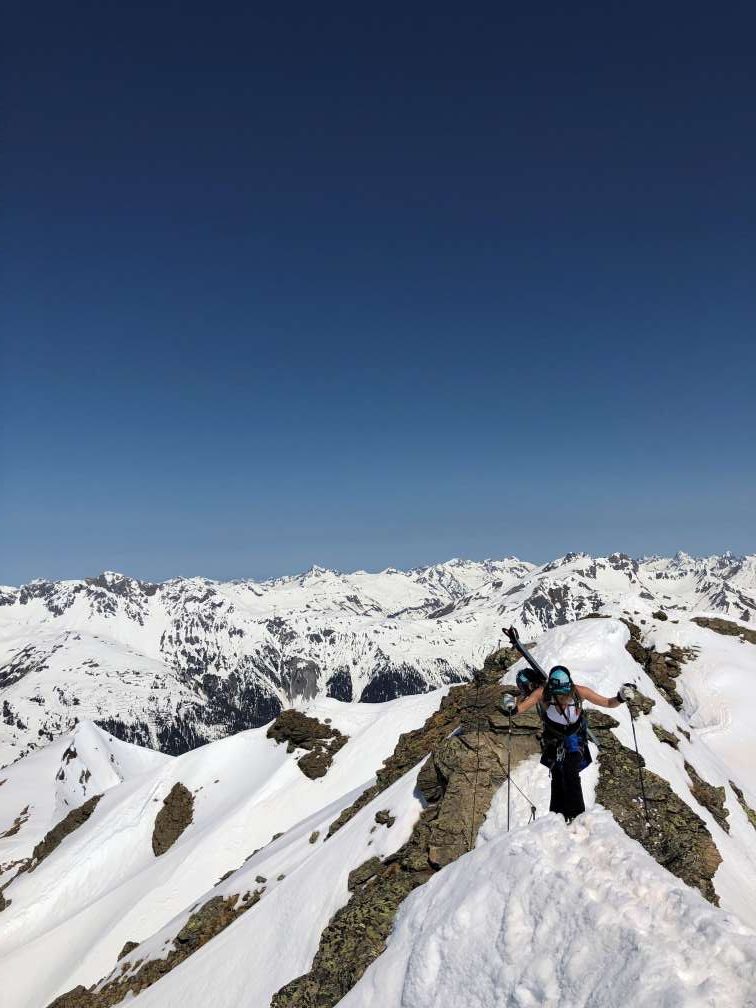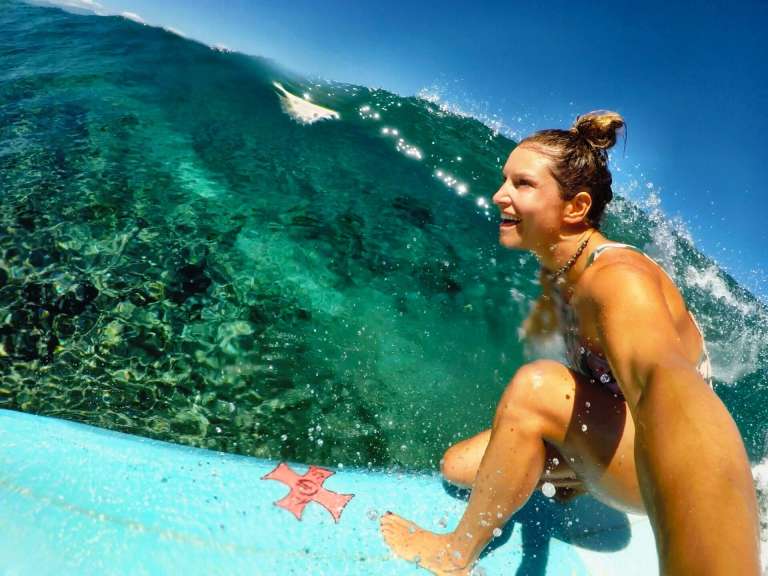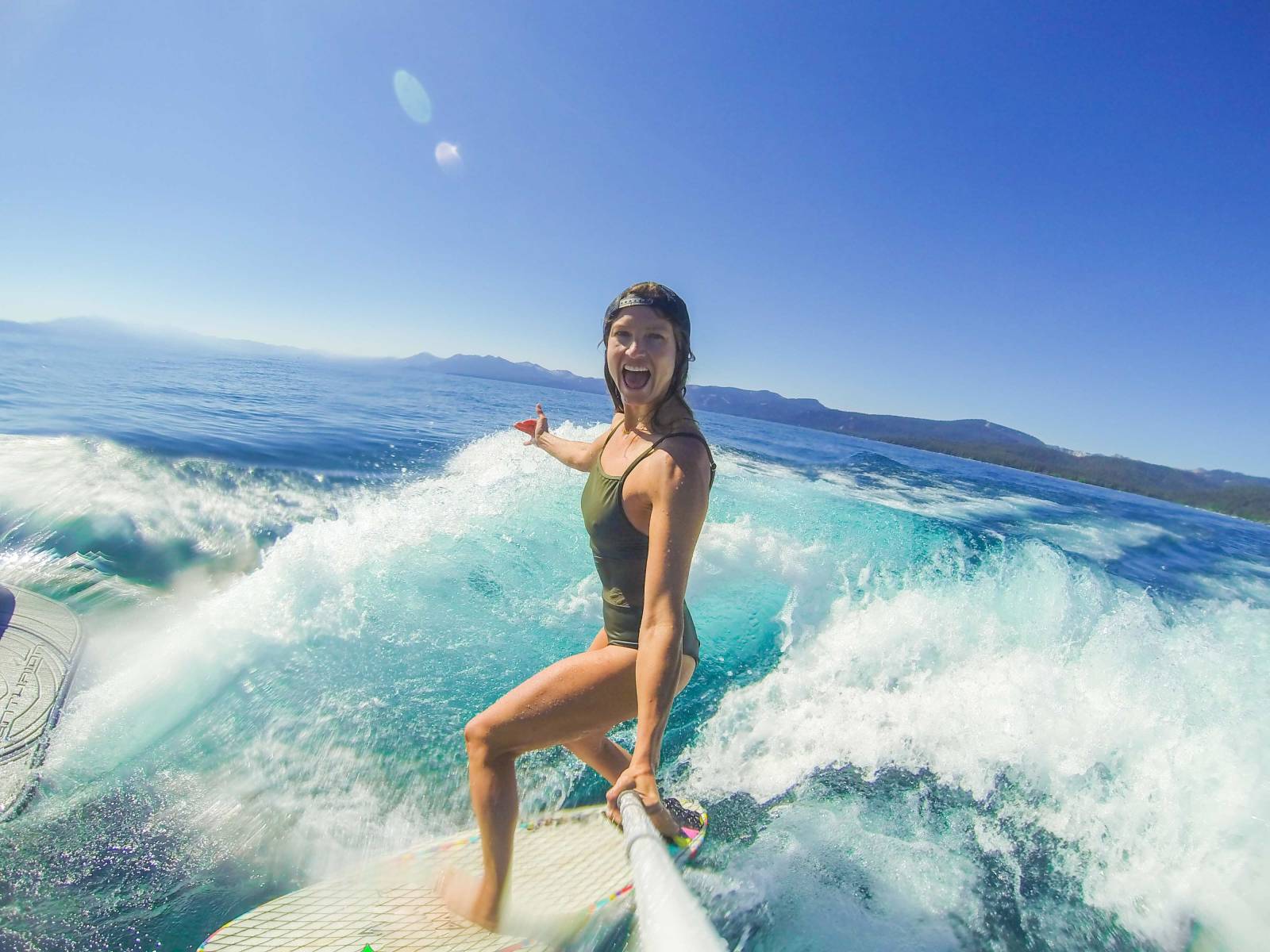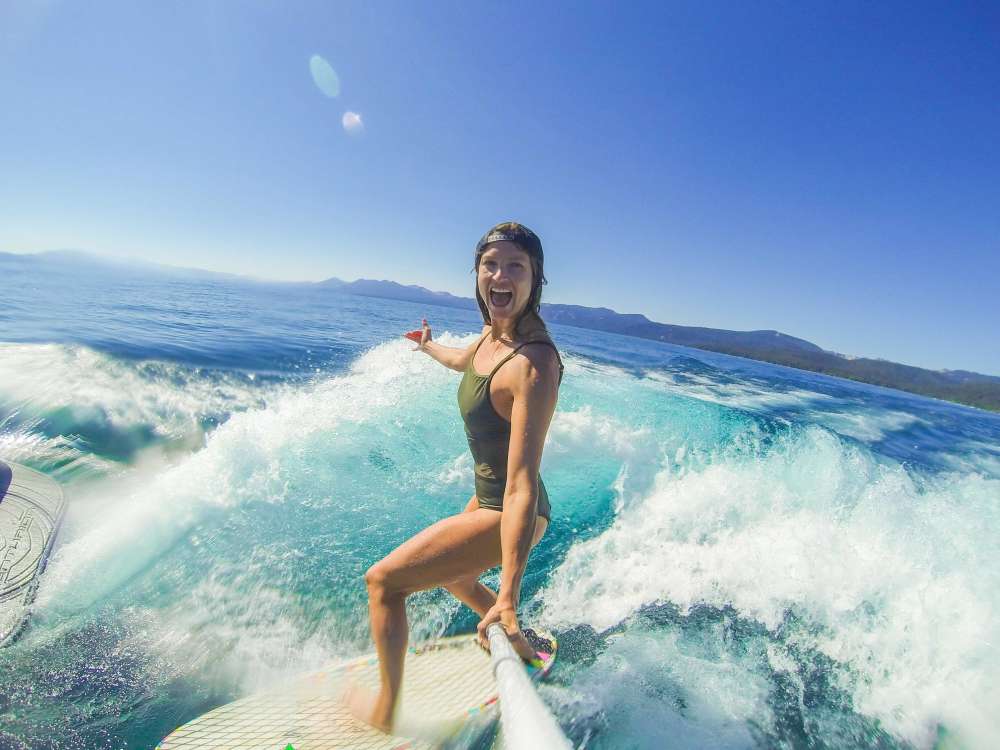JULIA MANCUSO
Julia Mancuso interview: “It definitely motivated me though my injuries because I would get a lot of messages from fans that I inspired them.”
Former Olympic Giant Slalom champion Julia Mancuso on the impact of social media for the modern athlete.
JULIA MANCUSO
Julia Mancuso interview: “It definitely motivated me though my injuries because I would get a lot of messages from fans that I inspired them.”
Former Olympic Giant Slalom champion Julia Mancuso on the impact of social media for the modern athlete.
“I don’t think trolls are worth spending any energy on. People who write negative things are just looking for attention.”
Julia Mancuso is in a happy place.
The Fijian island of Tavarua, three miles from Viti Levu and the nation’s capital, Suva, is where the most decorated US female Olympic skier has settled – at least for the next few months.
A tiny, heart-shaped piece of paradise, Tavarua is lapped by the kind of impossibly clear turquoise waters which lure divers, snorkellers and most significantly surfers, out from their cyan-roofed luxury shelters down to the ivory sand that rings the island. Make no mistake, Tavarua is a mecca for surfers and for a lady like Julia Mancuso, who looks as happy riding the waves as she does the mountain pistes, it’s a kind of utopia.
Julia retired officially from professional skiing at the start of this year, closing the book on a career that included four Olympic and five World Championship medals. In fact she has won more Olympic medals than any other female US alpine skier.
What Julia Mancuso is not so well-known for is a career-spanning battle with a debilitating and often agonising condition called hip displaysia. After yet more surgery earlier this year Julia is finally able to walk limp free.
And her world has opened up.
Thanks to the cultural phenomenon of social media, that’s a walk we can take with her. “I think it’s nice to be able to directly connect with fans,” she tells me, sounding a lot like somebody who uses social media in the way it was originally intended. “I like Instagram because it seems to be the place where most people spend their time now. Facebook is tough because they expect pages with a large following to pay to get their posts out there. It’s not as natural or useful as it used to be.”
At a glance the Julia Mancuso Instagram feed is a mosaic of the colours that represent her lifestyle: it’s all blue ocean, white snow and blond sand – albeit there’s a bit less of the white stuff than there used to be.


“Right now I am in Fiji, my husband is the GM of a surf resort called Tavarua and we split our time between that and travelling. My dream was always to travel the world when I retired from ski racing, so we have a fun four months ahead.”
The curtain fell on Julia’s skiing career in January this year at Cortina d’Ampezzo, Italy. The hip problem was taking its inexorable toll, shearing the edge off her ability to compete with the top skiers in the world. But this was no overnight submission: Julia spent an entire career shrugging off the bleak forecasts of others, including medical professionals.
Hip displaysia is a condition where the socket does not fully encase the ball of the hip, and can lead to deterioration of the bone and joint dislocation. It can make walking difficult, and a sufferer wouldn’t think about a career in sport -certainly not one like skiing. At 18, Julia was given a harsh medical reality: make your choice between competitive skiing, and living a normal life. The thing is, by that point in her life the young Julia had already competed at Olympic level (at 17 she represented the USA at the 2002 Salt Lake City Games). She won the World Championship Junior titles in downhill, combined and giant slalom the same year. In short, the young Julia Mancuso had tasted competition racing and assumed, rightly as it turned out, that there might just be a shiny future ahead.


Arguably the crowning glory of Julia’s decorated career – although she would go on to medal at both Vancouver and Sochi as well – the 2006 Olympic giant slalom gold medal in Turin was followed by desperately-needed surgery. World Championship combined silver in 2007 pinted to a successful operation, but Julia found herself in the wilderness for much of her inter-Olympic years. If she was conserving her body for the Games, it paid off: to repeat, Julia Mancuso has won more Olympic medals than any female US alpine skier. But while her Olympic results posited a subsequent period of dominance, the relentless grind of Julia’s hip problem dictated otherwise. To paraphrase Muhammad Ali: “Often it isn’t the mountains ahead that wear you out, it’s the little pebble in your shoe.”
The attrition of Julia’s little pebble continued despite the surgery and after Sochi the pain became too much. Another op and six months on crutches didn’t stem her ambition for a fifth Games at Pyeongchang, but returning to the tour in the 17/18 season, she was unable to find her previous form.
She had spent the better part of two decades going up against and beating the best in the world though. For so long Julia went in search of, and found, a fortitude that most of us will never know. It might have come down to a do-or-die determination, but that trait doesn’t ring quite true for a lady who lives life in the pursuit of freedom and enjoyment above the rigors of competition.
It’s not unfair to suggest that Julia Mancuso took strength from the world around her.
When Julia won her first Junior World Championship title in 2002, the term social media was all but unheard of. It makes Julia an interesting case study because she has competed through the birth of social media, its subsequent growth and its current period of dominance. And while she acknowledges the down-sides of the most powerful communication tool on the planet, she has unquestionably made the most of it during her career as well as in the crossover between competition and life after skiing. Not only that, she’s proved it can be an effective tonic when you’re hobbling about on crutches.
“Social media is interesting,” she says, “because if you use it to your advantage you can make a successful career outside of your sport or your results, but on the other side there is a lot more expectation from sponsors etc., that as athletes we didn’t used to have. I feel lucky that I have it now because it’s an easy way to transition into other income now that my competitive career is over. I think it’s nice to be able to directly connect with fans. It definitely motivated me though my injuries because I would get a lot of messages from fans that I inspired them. I think that’s the greatest thing about sports, the opportunity to be a role model and inspire others to live their best life.”


It’s easy to see social media as the golden goose, the gift that costs nothing (okay, that’s not always true but you get the picture) and keeps giving back. If you’re a public figure in any field, there is a whole world out there clamouring at the window into your life. (And remember, the Julia Mancuso Instagram feed attracts a quarter of a million followers at the time of writing!) They have a portal through which to reach out to you and if you want to, you can reach back.
But for some the up-sides aren’t the whole picture. Sure, there are those who like to fan the flames of public opinion but there are also those who, for some unknown reason, draw scathing criticism without apparent justification. We’ve all seen it. And the problem is, the bigger your reputation, the more exposed you are as a target: sometimes the spotlight shines benevolently, sometimes it doesn’t. Perhaps because Julia has exuded positivity in the face of physical adversity for so long, she draws a more compassionate audience than others.
“I really try to be positive and mindful about what I post and I think that has been reflected in my comments. I rarely receive any negative comments and I have been lucky to not have to deal with any bullying. When it does happen though, I think the best thing to do is leave it to your fans to defend you. I don’t think trolls are worth spending any energy on. People who write negative things are just looking for attention.”
More than most, Julia seems to have grasped the point of social media: that it was designed as an organic entity. These days it’s become an advertising platform in a way it wasn’t initially intended for, and those who try to short-cut the system occasionally (often) fall by the wayside. Using it properly, as a method of open and honest communication, has worked well for Julia. Just ask her quarter of a million Instagram followers.
“The advantage is getting to know people and why they are fans of the sport, also a way to make a direct difference in someone’s life.”


And making a difference is something of a Julia Mancuso mantra, a value that’s traversed from the mountains of her skiing career to the beaches of Fiji, and beyond: there is the burgeoning YouTube channel and a blog in the making; and alongside her work in the surf resort of Tavarua (yes there are worse jobs in the world and yes, she acknowledges it) there is also Pure Golden Wellness, a health platform set up by Julia and her sister April Mancuso, a doctor, and fellow Winter Olympic champion Torah Bright and her sister, former Olympic alpine skier Rowena Bright Hyldahl.
“Pure Golden Wellness was an idea that we had as a group of sisters that wanted to inspire others to be healthy and educate people about health inside and out. We haven’t really figured out where the business is going yet, but for now we are a group of independent consultants for Arbonne, a network marketing brand that has a very strict ingredient policy that we believe in.”
When you understand something of what makes Julia Mancuso tick, it’s not surprising that she is content to let Pure Golden Wellness cut its own path. It’s a reflection of her values of natural growth – alright, organic – and the way in which she seems to feel her way to success. To assume that Julia is somehow passive or lacking in focus though would be inaccurate; Julia has been shaping her life from the very earliest days of downhill competition.
“I think it’s important for an athlete to treat their career as a business, and for sure focus one hundred percent on doing what you can to be the best, but there is always time to make that business about more than just winning. My hobby was to grow my brand and create a business that would continue past racing. I would recommend athletes find someone they trust or invest a little bit into an assistant if it’s not what they want to manage or if it feels draining.”
Whatever Julia is doing, it works. Look at her life (because as we’ve established, you can) and you’re drawn into the highs and lows; there are medals and mountains, there are beaches and sunsets. And there are hospital beds and walking sticks and brutal scars. Her values are as enticing as the glassy waters in which she surrounds herself nowadays and the flow of her continued development seems to be destined for the same kind of reward she found on the Olympic mountain.
“Social media in general has given me a platform to continue sponsorships and it has also brought me new opportunities. I am very grateful for that.”
I’m grateful too, because I clicked and I followed and I subscribed. I think I might just be hooked on the Mancuso Way.


My thanks to Julia Mancuso for her time.
You can keep up with Julia on her adventures post-skiing at the following places:
Julia Mancuso Website: juliamancuso.com
Julia Mancuso YouTube: juliamancusoUSA
Julia Mancuso Instagram: @juliamancuso
Julia Mancuso Twitter: @juliamancuso
Pure Golden Wellness: puregoldenwellness.com
Julia Mancuso Facebook: /JuliaMancusoUSA
Related article: Hanna Oberg
